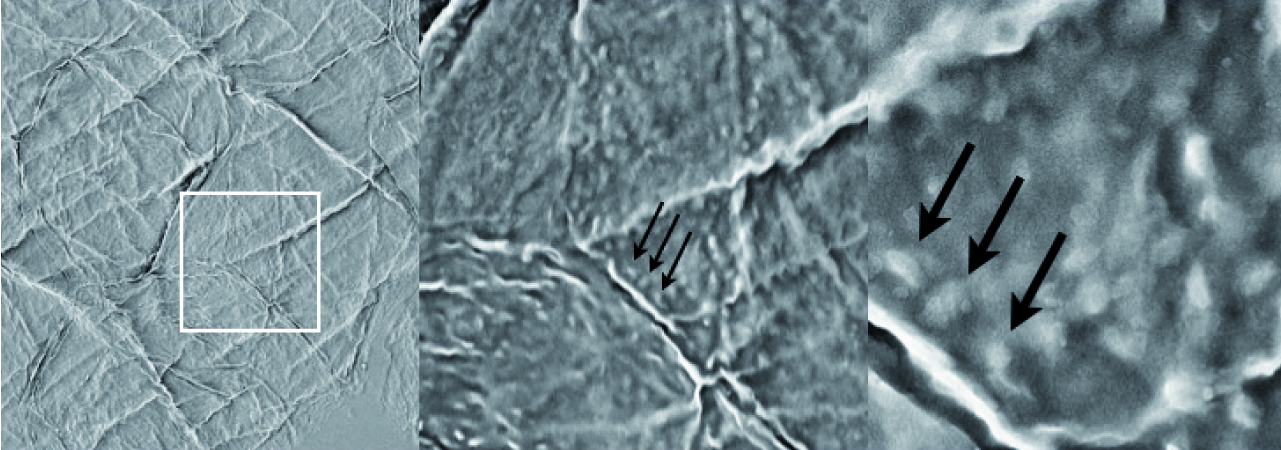
Exploring the nanoscape of skin cells in clinical studies
A peculiar phenomenon
Circular nano-structures have already been observed on corneocytes decades ago. They were hypothesized to indicate compromised skin function. However, manual counting was virtually impossible because of high numbers and biological heterogeneity. A reproducible counting routine was not available.
In 2013, the automatic counting could successfully be applied to corneocyte samples using the nAnostic™ routines, which had been designed specifically for AFM topographies. Clinical validation is pursued ever since within various investigator-driven studies (see here for a recent review article). The cell texture currently emerges as a new label-free skin biomarker.

- DTI reflects severity of disease as measured by clinical scoring (SCORAD – for Atopic dermatitis, AD). Of note, the DTI in this graph is taken from non-lesional samples, while the SCORAD includes the visible skin lesions.
- Hallmark of many skin diseases is a reduced barrier function – regardless of whether being cause or consequence of disease. Barrier function is usually measured as the loss of water across skin (Trans-Epidermal Water Loss, TEWL). Obviously, cellular stress coincides with a loss in barrier function.
-
Maintaining barrier function centrally involves skin moisture regulation. Dry skin is more prone to disease. DTI closely (anti-)correlates to the concentration of natural moisturizing factors (NMF).
-
NMFs are a degradation product of filaggrin (FLG). Filaggrin is a protein that aggregates keratin filaments to bundles. Over 60% of AD patients carry a mutation in the flg-gene. Among children suffering from AD, a subgroup homozygous for loss-of-function mutation in flg (-/.) has highest DTI values, while flg-wild types had lower values (closer to healthy, less severity).
Taken together, DTI reflects skin integrity and function. The observational categories hierarchically cover genetics (filaggrin), biochemistry (NMF), physiology (TEWL) and clinical picture (SCORAD). quantitatively and objectively
